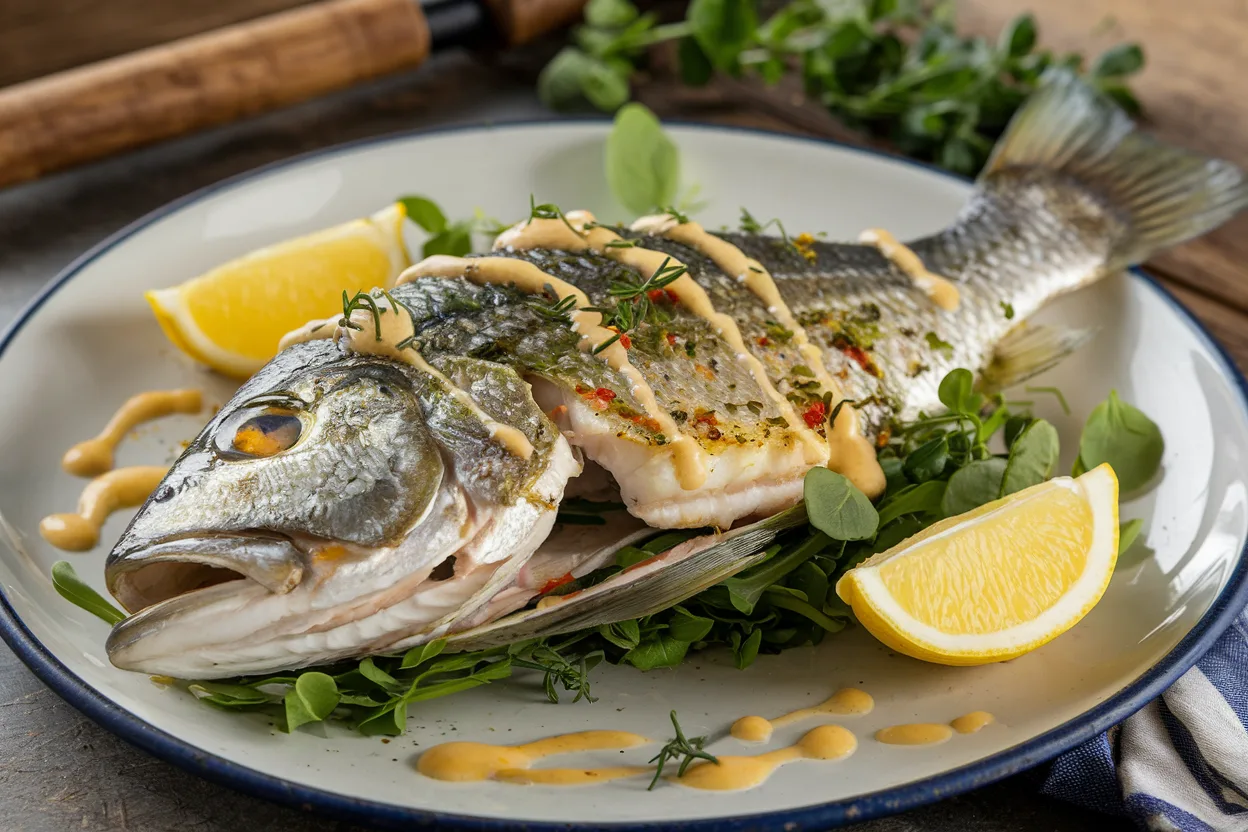Barramundi, a versatile and healthy fish, is a culinary delight waiting to be explored.
This fish is a favorite among chefs and home cooks alike.
Its mild flavor and firm texture make it a perfect canvas for a variety of recipes. Whether grilled, baked, or air-fried, this fish can be transformed into a mouth-watering meal.
But how much does it cost? What factors affect the barramundi fish price?
And how do you select the freshest barramundi at the market?
In this article, we’ll delve into these questions. We’ll also share tips on preparing and cooking barramundi, and provide a selection of delicious recipes for you to try at home.
Whether you’re a seasoned cook or a beginner, you’ll find this guide to barramundi a valuable resource. Let’s dive in and explore the culinary delights of this fish.
Understanding Barramundi: An Overview
This fish, also known as Asian sea bass, is a type of fish that’s gaining popularity in kitchens worldwide.
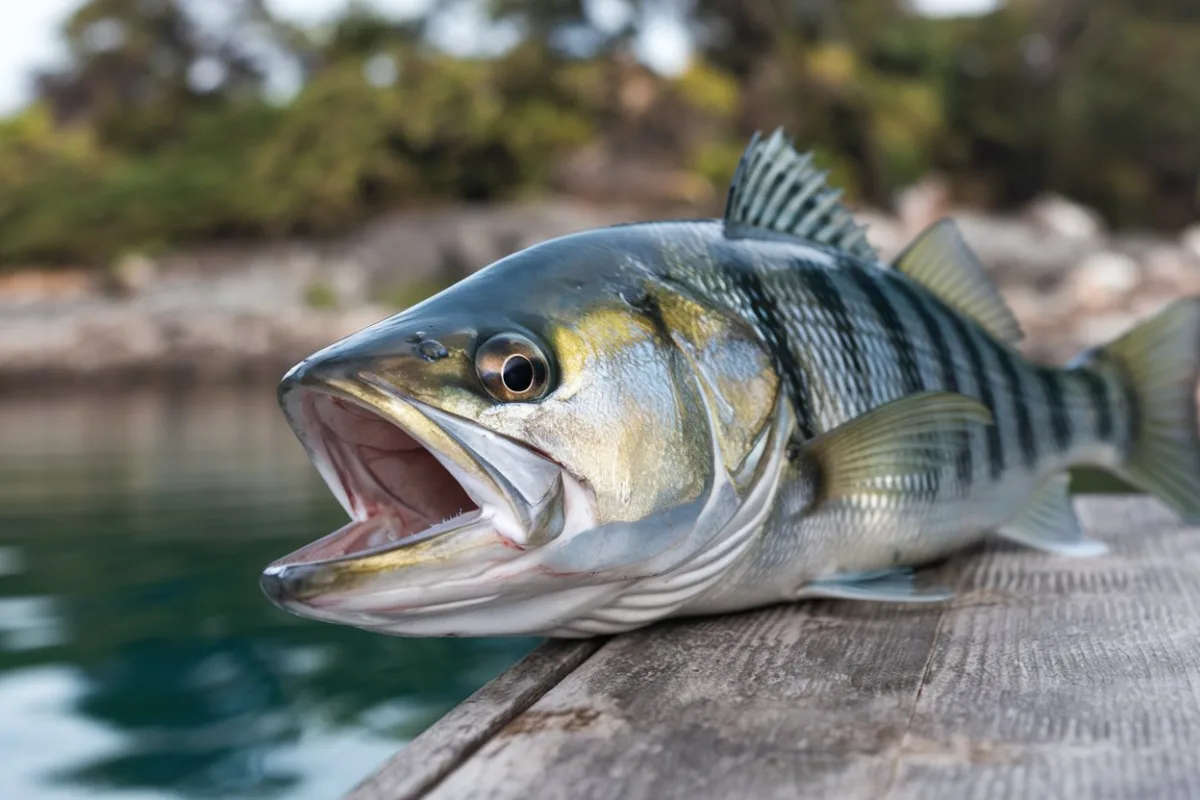
Its name comes from an Australian Aboriginal language and means “large-scaled river fish”.
This fish is a versatile fish that can be cooked in various ways. It’s also packed with nutritional benefits, making it a healthy choice for any meal.
But where does barramundi come from? And how is it farmed?
Let’s delve into the origins, nutritional benefits, and sustainability practices associated with barramundi.
Barramundi Origins and Habitat
This fish is native to the Indo-Pacific region.
It’s found in coastal waters, estuaries, lagoons, and rivers.
This fish is a popular choice in Australia, Southeast Asia, and India. However, it’s now being farmed in other parts of the world, including the United States.
Nutritional Benefits of Barramundi
Barramundi is a lean, white fish that’s high in protein.
It’s also rich in omega-3 fatty acids, which are beneficial for heart health.
Moreover, barramundi is a good source of vitamins, such as vitamin A and vitamin D, and minerals like zinc and potassium.
Sustainability and Farming Practices
Sustainability is a key factor when it comes to barramundi farming.
Many farms use responsible practices to raise barramundi. These include recirculating aquaculture systems that minimize environmental impact.
Moreover, barramundi is a fast-growing species, making it a sustainable choice compared to other types of fish.
Barramundi Fish Price: What You Need to Know
The price of barramundi can vary depending on several factors.
On average, you can expect to pay around $20 per pound for fresh barramundi fillets.
However, prices can fluctuate based on the factors we’ll discuss in the next section.
Factors Affecting Barramundi Price
The first factor that affects the price of barramundi is its origin.
Wild-caught barramundi, especially those from Australia, can be more expensive than farmed ones.
The method of farming also plays a role in the price. Barramundi from farms that use sustainable practices may cost more, but they’re often a better choice for the environment.
How to Select the Best Barramundi
When buying barramundi, there are a few things to look for to ensure you’re getting the best quality.
First, the fish should have a fresh, clean smell. Avoid any fish that has a strong, fishy odor.
The flesh of the barramundi should be firm and spring back when pressed. If it’s slimy or mushy, it’s likely not fresh.
Preparing Your Barramundi
Once you’ve selected your barramundi, the next step is preparing it for cooking.
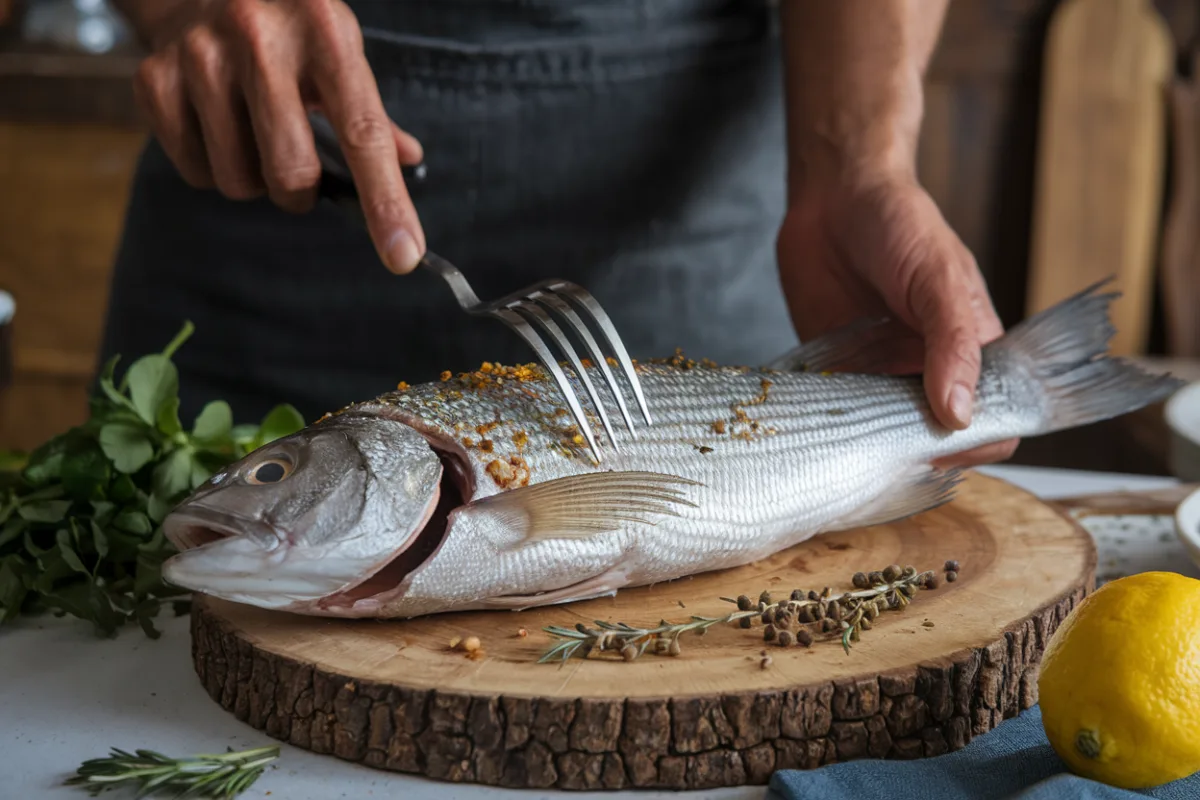
This involves cleaning the fish, storing it properly, and filleting it if necessary.
Let’s delve into each of these steps in more detail.
Cleaning and Storing Tips
Cleaning barramundi is a straightforward process.
First, rinse the fish under cold water to remove any scales or debris.
Then, pat it dry with a clean towel.
When it comes to storing barramundi, it’s best to keep it in the coldest part of your refrigerator.
Wrap the fish in plastic wrap or place it in an airtight container.
Remember, fresh barramundi should be cooked within two days of purchase.
Filleting Techniques
Filleting barramundi can be a bit tricky, especially for beginners.
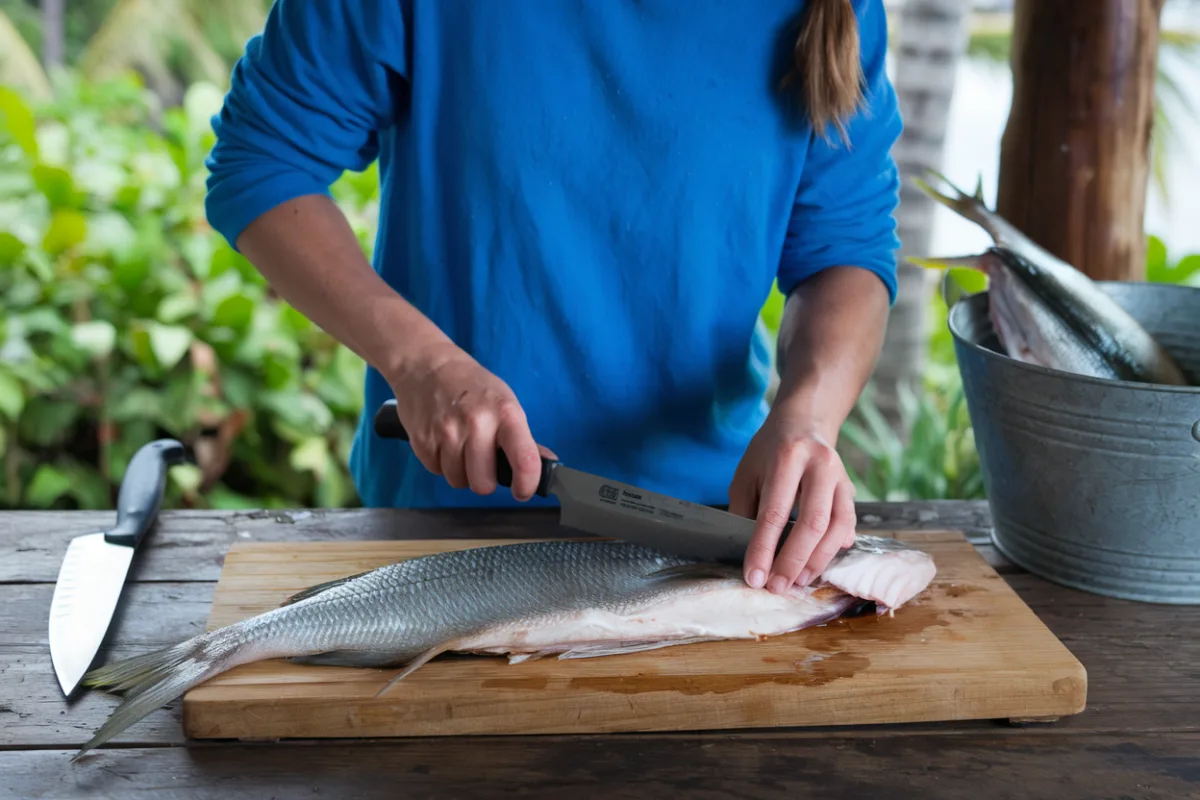
Start by making a cut behind the gills, then slice along the backbone towards the tail.
Repeat on the other side, then remove the skin if desired.
With a bit of practice, you’ll be filleting barramundi like a pro in no time.
Cooking Methods for Barramundi
Barramundi is a versatile fish that can be cooked in a variety of ways.
Whether you prefer grilling, baking, frying, or air frying, there’s a method to suit your taste.
Each method brings out a different flavor and texture in the fish.
Let’s explore each of these cooking methods in more detail.
Grilling to Perfection
Grilling is a popular method for cooking barramundi.
It imparts a smoky flavor to the fish and creates a deliciously crispy skin.
To grill barramundi, simply season the fish, place it on a hot grill, and cook until it’s done.
Remember to turn the fish halfway through to ensure even cooking.
Baking this fish: Simple and Delicious
Baking is a simple and healthy way to cook barramundi.
It allows the fish to cook in its own juices, resulting in a moist and flavorful dish.
To bake this fish, place the fish in a baking dish, add your desired seasonings, and bake in a preheated oven.
Frying for a Crispy Finish
Frying gives barramundi a crispy, golden exterior and a tender, flaky interior.
It’s a quick method that’s perfect for when you’re short on time.
To fry this fish, heat some oil in a pan, add the fish, and cook until it’s golden and crispy.
Air Fry Barramundi: A Healthier Alternative
Air frying is a healthier alternative to traditional frying.
It uses hot air to cook the fish, resulting in a crispy exterior without the need for much oil.
To air fry this fish, place the fish in the air fryer, set the temperature and time, and let the machine do the rest.
Barramundi Recipes to Try at Home
Now that we’ve explored the different cooking methods, let’s dive into some delicious barramundi recipes.
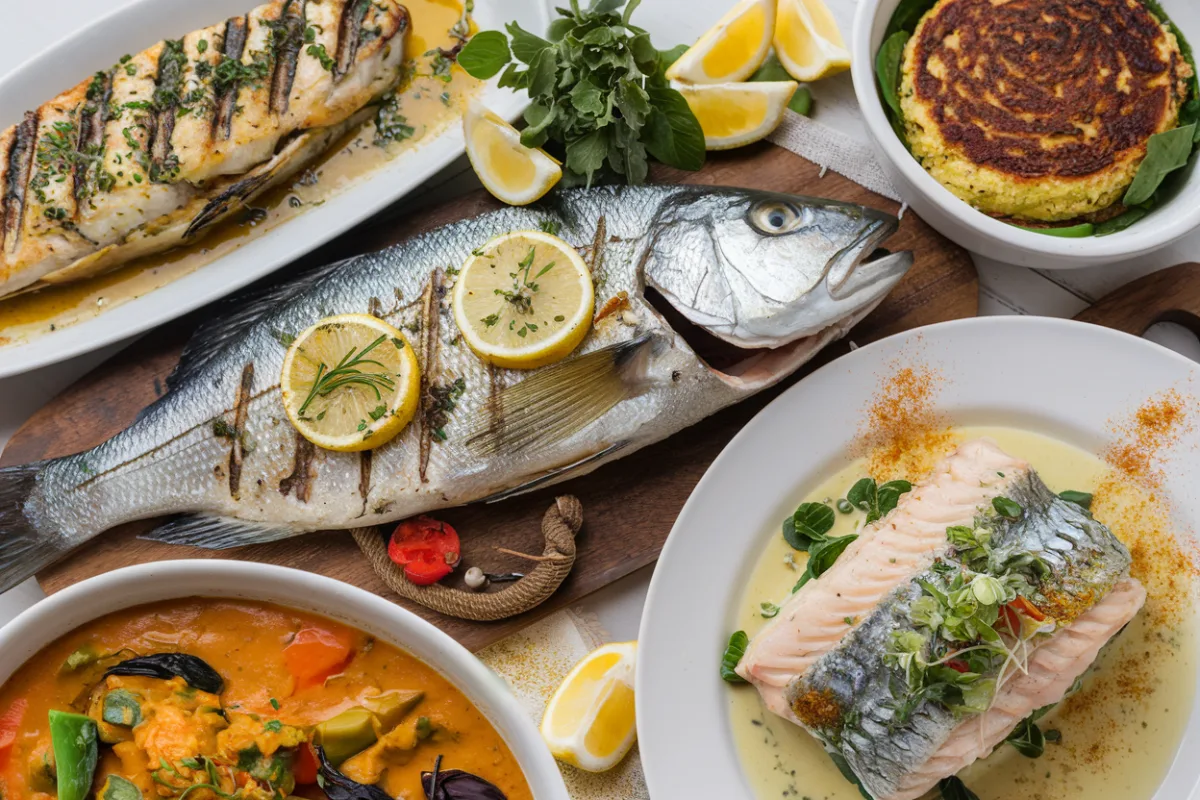
These recipes showcase the versatility of barramundi and offer a range of flavors to suit every palate.
From classic grilled barramundi to an Asian-inspired stir-fry, there’s something for everyone.
So, let’s get cooking!
Classic Grilled Barramundi with Lemon and Herbs
This classic recipe is a crowd-pleaser.
The combination of lemon and herbs complements the mild flavor of the barramundi.
Simply marinate the fish in a mixture of lemon juice, olive oil, and your favorite herbs, then grill to perfection.
Barramundi En Papillote for a Flavorful Meal
Cooking this fish en papillote seals in the flavors and keeps the fish moist.
Place the fish on a piece of parchment paper, add some vegetables, then fold and seal the paper.
Bake in the oven until the fish is cooked through and the flavors have melded together.
Asian-Inspired Barramundi Stir-Fry
This Asian-inspired recipe is packed with flavor.
Stir-fry this fish with a mix of vegetables and a savory sauce made from soy sauce, ginger, and garlic.
Serve over rice for a satisfying meal.
Barramundi Fish Tacos with Zesty Slaw
These fish tacos are a fun and tasty way to enjoy this fish.
Fry this fish until it’s crispy, then serve in a soft tortilla with a zesty slaw made from cabbage, lime juice, and cilantro.
Add some salsa and avocado for extra flavor.
Mediterranean Barramundi with Olives and Tomatoes
This Mediterranean-inspired recipe is full of fresh flavors.
Bake this fish with a mixture of tomatoes, olives, and capers, then finish with a drizzle of olive oil and a squeeze of lemon.
Serve with crusty bread to soak up the delicious juices.
Pairing and Serving Suggestions
Now that you have a selection of barramundi recipes to try, let’s discuss how to round out your meal.
Choosing the right side dishes can elevate your barramundi dish to new heights.
Let’s explore some options.
Side Dishes to Complement Barramundi
Barramundi’s mild flavor pairs well with a variety of side dishes.
For a light meal, consider a fresh salad with a citrusy dressing to complement the fish’s delicate flavor.
For something heartier, roasted vegetables or a creamy risotto can provide a satisfying contrast.
Conclusion and Final Tips
We’ve explored the world of this fish, from its origins to its culinary uses.
We’ve learned about its nutritional benefits, sustainability, and how to select the best fish at the market.
We’ve also delved into various cooking methods and shared a selection of delicious recipes to try at home.
Avoiding Common Cooking Mistakes
When cooking this fish, it’s important to avoid overcooking, which can result in a dry and tough texture.
Remember to keep the skin on when cooking to help retain moisture and achieve a crispy finish.
Lastly, don’t forget to season your barramundi well to bring out its natural flavors.
Encouragement to Experiment with this fish
Now that you’re equipped with the knowledge and skills, it’s time to start your own culinary adventure with this fish.
Remember, the best dishes often come from experimentation, so don’t be afraid to try new flavors and techniques. Happy cooking!
